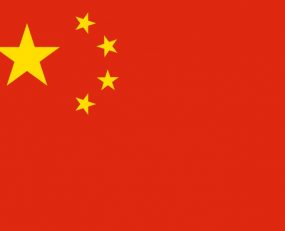
In the first brief from our Emerging Markets series, we take a look at China, the country at the top of the Agility Emerging Markets Logistics Index.
Whilst China has once more retained its position at the top of the Agility Emerging Markets Logistics Index, the past year has been one characterised by political, economic and social upheaval, a new and worrying state of affairs for a government which prides itself on continuity and ‘advancement’.
There is an impending crisis related to China’s claims on Taiwan. The escalating tensions between Taiwan’s ally, the USA, and China which can, and already is, having an impact of trade flows. The breakdown of relations started with the tariffs imposed on China by President Trump and continued under President Biden.
The visit of the Speaker of the US House of Representatives, Nancy Pelosi, to Taiwan in August 2022, prompted China’s military to undertake ‘live firing’ exercises in the waters around the island, disrupting air and shipping lanes.
This was a clear signal to the international community that a blockade of Taiwan could be used as a diplomatic and economic lever. Given the reliance of the global semiconductor industry on Taiwanese manufacturers, especially in terms of the most advanced technologies, the West has taken steps to try to establish its own factories, whilst simultaneously preventing China from gaining access to technology which could be used for military purposes.
Moving production out of China
From 2023 onward, Southeast Asia, India, Europe and North America will be more attractive production and sourcing destinations than China.
Southeast Asia followed by India will be the most attractive re-location destinations, with 13.6% and 13.4% of respondents respectively stating their companies will move production or sourcing activities to these destinations.
Moving production out of China is easier for some industries than others. Supply chains for products like furniture, apparel and household goods will be relatively easy to diversify because the inputs are relatively easy to obtain.
‘In China for China’ production strategy
A so-called ‘In China, for China’ production strategy has been developed by increasing the domestically-sourced proportion of intermediate goods. This would obviate the need to import components from competitors throughout the region – a calculated, strategic and successful move.
Encouraged by the country’s political leaders, consumers are purchasing Chinese-made rather than foreign goods in increasing volumes, a significant shift in behaviour from only a few years ago. This trend is particularly evident in the younger demographic which takes pride in buying domestically produced goods.
For more on how China is being decoupled from global supply chains and our Index top ten (India, UAE, Malaysia, Vietnam and more):
Download our free report: Agility Emerging Markets Logistics Index
The Agility Emerging Markets Logistics Index from Agility & Ti Insights, ranks countries for overall competitiveness based on their logistics strengths, business climates and digital readiness – factors that make them attractive to logistics providers, freight forwarders, air and ocean carriers, distributors and investors.
Source: Agility & Ti Insights